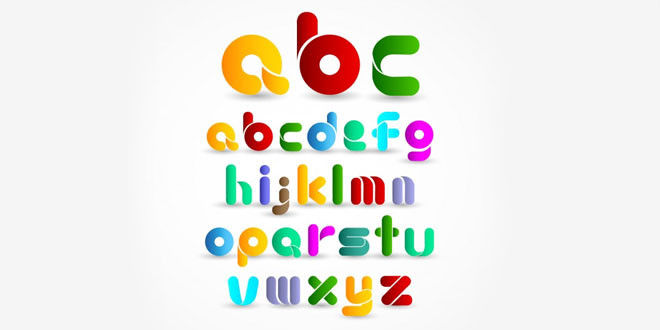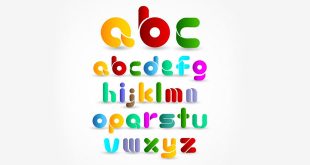Tenses In English
Present Tense
Simple Present Tense
A sentence is presented in simple present tense when it is used to describe an action that’s happening at present and does not indicate when the action is expected to end. Simple present tense is used when:
- The action that is taking place in general.
- The action is not only occurring now; it repeats after regular intervals of time.
- To indicate facts those are generally true.
- The action for relating habits and routines that happen all the time, be it in the future, past or present.
Structure:
Verb “+s/es” form is used;
- If subject is 3rd person singular. The verb is used in its original form;
- If subject is 1st and/or 2nd person singular.
- If subject is 1st and/or 2nd person plural.
- If subject is 3rd person plural.
Some Examples:
- The sun sets in the west.
- All the cars stop at this crossing.
- Michael teaches social studies in a school.
- That notice reads, “No parking”.
- Rajdhani leaves at seven in the morning.
- The teacher said if she works hard she will pass.
- There goes the taxi.
- Do you play tennis?
- He does not go to the temple.
- Does he write novels?
Present Progressive Or Present Continuous
Though the simple present and present continuous tenses are used interchangeably, present continuous usually defines an act that is going on at the time of speaking.
The sentences with present progressive tense are used when:
- Something is taking place now, while speaking and has a definite end as well.
- When something is already decided and arranged as well to perform it.
- To indicate an undesirable habit.
Structure:
- Use first form of the verb “+ing”
- Singular 3rd person subject — use ‘is’
- Plural 1st, 2nd and 3rd person and singular 2nd person subject — use ‘are’
- 1st person singular — use ‘am’
In other words, it is “Subject + be (is, am, are) + Verb+ -ing + Object”
Some Examples:
- Please wait for a moment, Shyam is talking to Mary.
- We are late; he will be waiting for us at the restaurant now.
- Mom, I am playing football.
- Are they still living here?
- She is having her breakfast now.
- I’m planning to meet the Director tonight.
Present Perfect Tense
It’s probably the most used tense form in English Grammar and is also considered difficult to understand. The Present Perfect Tense explains the incident that has happened in the past and that continues until the present time.
Examples
- For almost five generations, my family members have been engineers.
- In order to avoid delays in my work, I have been doing it regularly.
- I have always wanted to ride on this vehicle.
Present Perfect Continuous Tense
Usually, Present Perfect Continuous Tense is used for a situation that has occurred in the past and which continues until that moment.
Structure:
- Use the first form of the verb + “–ing”
- Singular subject (has been), Plural subject or I (have been)
- ‘Since’— if the point of time is mentioned.
- ‘For’ — if the duration of time is specified.
Examples:
- I have been eating apples today.
- You have not been studying for the past month.
- We haven’t been playing with Mary since Tuesday.
Past Tense
Simple Past Tense
Simple past tense is used to narrate an action of the past. The verb in the past tense ends with an ‘-ed’ and hence, there are seven ways of marking the irregular verbs in the past tense. The most common being the change of the vowel as in ‘drink’ – ‘drank’.
Construction
Subject + verb + Object
Examples:
- Katie worked in that office for almost four years.
- He passed away in 1999.
- We went for the movie yesterday.
- Three years ago, I studied at the Canada University.
Past Continuous Tense
This from of tense indicates activities that have already happened in the past and have been completed before the time of mention. These sentences are formed with the help of an auxiliary verb and giving the main verb an ‘ing’ ending.
Structure
Subject + was/were + Verb in its -ing form + Object
Examples:
- He was washing the dishes, while she was cooking dinner.
- I was working at 11p.m yesterday.
- We were playing football when it started to rain.
- She was reading a thriller novel when I called her.
- What were you doing when Sam arrived?
- I was walking down the street yesterday when the police van was patrolling the city.
Past Perfect Tense
This tense refers to a non-continuous action that was already completed in the past. Such sentences are formed by using the Simple Past form of the auxiliary verb ‘to have’, followed by the past participle form of the verb.
Structure
Subject + had + past participle form of verb + Object
Example:
- I had never seen such a beautiful before.
- She understood the movie only because she had read the book.
- Clara had never been to a club before last night.
- We didn’t get a room in the hotel because we had not booked in advance.
Past Perfect Continuous Tense
A continuous action that was completed sometime in the past falls under Past Perfect Continuous tense. Such sentences are framed by using the modal, ‘had’ + ‘been’ + the present participle of the verb (-ing).
Structure:
Subject + had + been + Verb (ing) + object
Example:
- I had been playing the guitar all morning.
- I had been sleeping all the way from the beginning of the class.
- He had been trying to call her.
- Until this year, Neha had been going to a village school.
- The baby had been crying out loud for minutes when her mother fed her.
Future Tense
Simple Future Tense
This tense is used for those sentences which refer to the actions which will occur later, in future. This requires a future tense auxiliary verb even though the verb would be unmarked.
Examples:
- You will be done before me.
- She will not come tomorrow.
- Will you come to play with me after school?
- I will keep in touch with you.
- I will reach home by 7p.m.
- He will stay with us for 3 days.
Future Continuous Tense
This tense defines those acts which will be continued at a future point of time. In order to form a future continuous tense sentence, a future auxiliary verb is required followed by a main verb that ends with -ing.
Structure:
‘will’ + ‘be’ + present participle of the verb (ing).
Construction
- Use first form of the verb (+ing)
- 1st and 2nd person — ‘Shall be’
- 3rd person — ‘Will be’
However, nowadays this distinction of ‘will’ and ‘shall’ is not followed. Instead, ‘will’ is used wherever absolute conviction is required to be expressed while the usage of ‘shall’ depends on individual writing style.
Examples:
- We assume that our representative will be winning the elections that are to be held at the end of April.
- Today, she will be walking all the way to her house from her office.
- I will be watching the new movie next week.
- By this time tomorrow, I will be at home watching T.V.
Future Perfect Tense
This tense is used to express an act that is predicted to be finished within a certain span of time in the future. Such sentences are formed by ‘will’ + ‘have’ + ‘past participle of the verb’.
Examples:
- By the end of the year, he will have saved enough for his sister’s wedding.
- You will have left for London by the time this bridge gets renewed.
- Calvin will have gone by the time you reach there by bus.
- I will have walked 15 kms by this time.
- How long will it have been since we were here together?
Future Perfect Continuous Tense
This tense form indicates an action that is continuous and, at some point in the future, it will be completed. It is formed using the modal ‘will/shall’ + ‘have’ + ‘been’ + ‘the past participle of the verb (-ing)’.
Examples:
- Next Saturday, I will have been working on this assignment for three years.
- Tomorrow, at this time, I shall have been playing cricket since morning.
- I will have been studying English for two hours by the time you arrive here.
Tenses are critical to sensible and flawless language. They help you convey your ideas clearly by way of words. They help indicate the time of the statement and provide the reader with a crystal-clear picture of incidents. With mere practice, you will be able to grab all the concepts of the correct usage of the tenses.
 Class Notes NCERT Solutions for CBSE Students
Class Notes NCERT Solutions for CBSE Students


